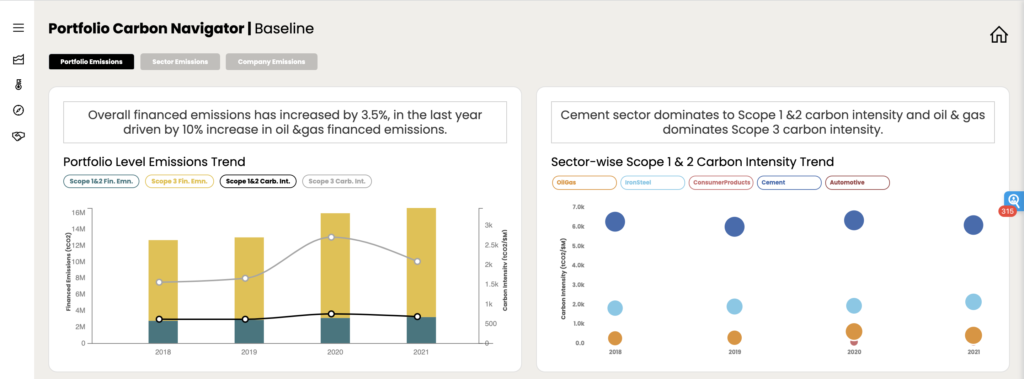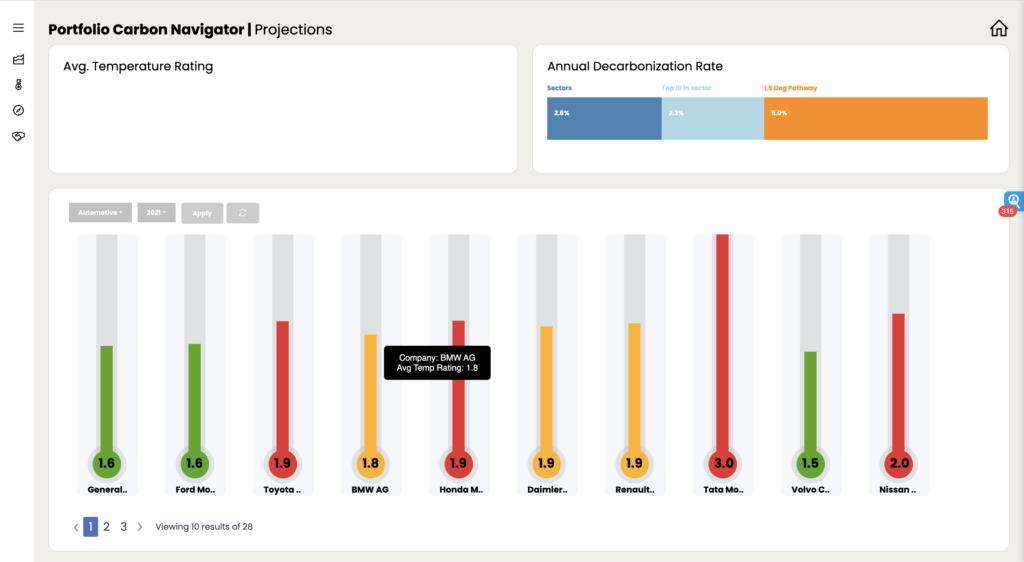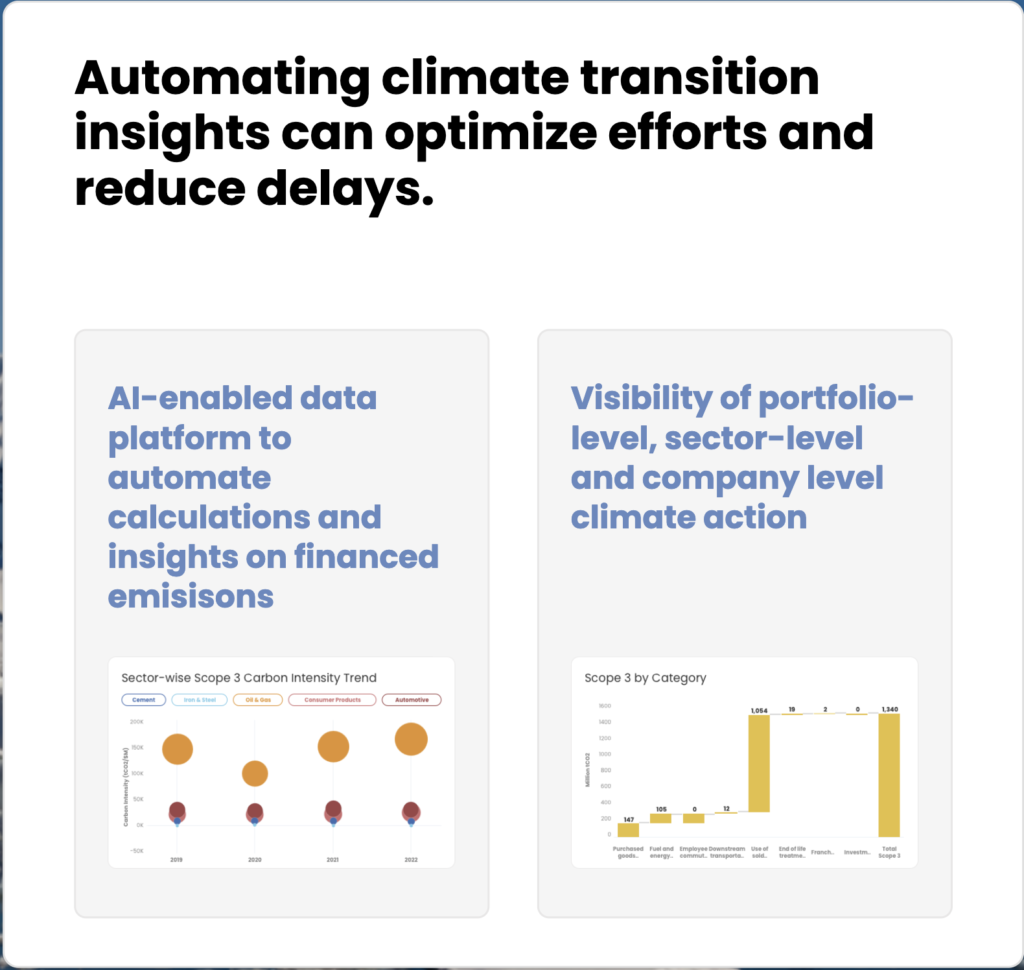On 12th December 2015, 196 participants of the United Nations Framework Convention on Climate Change (UNFCC) at the Conference of the Parties (COP) adopted the Paris Agreement as a binding legal international treaty on climate change.
It came into effect on 4th November 2016.
The objective of the Paris Agreement is to restrict the rise in global temperatures this century to well below 2 degrees Celsius, ideally 1.5 degrees Celsius, pre-industrial levels.
Table of Contents
What is a Climate Transition Plan?
A climate transition plan is an action plan that establishes a timeline for when an organization will transform its business model, assets & operations to meet its climate goals.
This could include halving its greenhouse gas (GHG) emissions by 2030, adopting the goals of the Paris Agreement, or aligning with any recent & ambitious climate science recommendations.
Why is Climate Transition Plans Important?
Nearly a quarter of the world population recorded unprecedented high temperatures in 2021, with more than 400 weather stations recording their highest temperatures ever globally.
The science on man-made climate change is clear. To prevent civilization-ending catastrophes in our lifetimes, we must halve carbon emissions by 2030. Additionally, we must achieve a net-zero (the amount of GHGs removed from the atmosphere equals the amount added) global economy by 2050.
To reach this goal, we must cut emissions by 7% each year till 2030 & for-profit corporations will have to play a crucial role if we are to achieve these targets. To avoid falling behind, global organizations must get ahead of regulation.
Why Should Organizations Care for Climate Transition Plans?
Today, companies are under immense scrutiny to create their net-zero climate transition plans. The following are some reasons why climate transition plans matter to them.
Instill Stakeholder Confidence
Investors & the market are no longer satisfied with just decarbonization commitments. Organizations must also disclose & demonstrate how they are transforming their business models & linking them to KPIs, remuneration, etc.
Climate transition plans offer confidence to stakeholders that corporate net zero commitments will be honored & spur real action.
Inform Business Decisions & Strategy
Achieving net zero targets sometimes requires a paradigm shift in traditional business models – the products on offer, how they are produced & distributed, etc. These decisions have the potential to affect the CAPEX & OPEX of the company.
Company boards often rely on their climate transition plans to guide them in making these critical business strategy calls.
Create Value & Build Resilience
A climate transition plan provides a fresh perspective on business strategies & operations. It helps identify new revenue streams resulting from transitioning to a low-carbon footprint. It also helps eliminate vulnerabilities to climate-related issues, both in the present & future.
Climate transition plans allow organizations to view their existent modus operandi in a new light, fostering new ideas, inspiration & innovation.
How Do Banks & Financial Institutions Play a Crucial Role in Climate Transition?
Banking & finance can indirectly affect the environment. Post the Paris Agreement, the fossil fuel industry has received $1.9 Trillion from 33 global banks. It is estimated that investments of around €6.2 Trillion will be required to restrict global warming to 2 degrees Celsius by 2030.
The financial sector is responsible for assessing the monetary risks of climate change. When the adverse effects of climate change, such as storm impacts, damage businesses & homes, the risk of loan defaults increase dramatically.
The commercial & regulatory pressure on banks to align with global sustainability initiatives & protect themselves from climate change is rising every day. This has led many financial institutions to consider Environmental, Sustainability, & Governance (ESG) factors while making investment decisions.
There are also commercial incentives to manage climate risk better. Institutional lenders incorporate climate factors into portfolio monitoring, loan approvals, capital allocations & reporting. They also offer sustainable finance, such as new capital for environmental initiatives & discounts.
This allows them to promote their green credentials.
Net Zero Goals of Financial Institutions with the UN
Net-Zero Banking Alliance (NZBA)
Convened by the United Nations (UN), the Net-Zero Banking Alliance comprises a global group of banks representing around 40% of banking assets worldwide. These international lenders are committed to aligning their investment portfolios with net-zero emissions by 2050.
Science Based Targets Initiative (SBTi)
The Science Based Targets initiative (SBTi) comprises more than 3000 financial institutions & businesses that are committed to aligning with climate science to reduce their emissions.
Race to Zero
This is an UN-backed global campaign that comprises non-state actors that, including financial institutions. Members of the Race to Zero campaign are committed to taking aggressive action to halve global emissions by 2030.
Glasgow Financial Alliance for Net Zero (GFANZ)
Chaired by the UN Special Envoy on Climate Action & Finance, the Glasgow Financial Alliance for Net Zero includes more than 160 firms with assets exceeding $70 Tn.
Members firms of the GFANZ are committed to accelerating the net zero emissions transition latest by 2050.
How Can Gramener’s Portfolio Carbon Navigator Solution Help?
Institutional lenders committed to decarbonizing their investment portfolios face myriad challenges. These portfolios typically comprise thousands of investees under different asset classes.
Financial institutions must find a way to track the decarbonization efforts of their clients & evaluate their financed emissions. These tasks involve collecting data from thousands of different corporate customers & multiple external sources.
Gramener’s Portfolio Carbon Navigator can help automate most of these tasks. It can also provide standardized reports & questionnaires to help financial institutions persuade their investments to commit to more ambitious climate action by improving their carbon transition plans.
Our climate transition analytics solution can help institutional lenders gain invaluable insights into their financed emissions. It can also offer a window into the climate transition best practices in sectors where they have invested.
The solution comprises the following modules:
Baseline (Financed Emissions Evaluation)
This module breaks down financed emissions by sectors & asset classes, such as corporate bonds, equity investments, business loans, etc. Lenders can also track the carbon footprints of individual customers.

Projection (Tracking the Decarbonization Rates of Investees in their Portfolio)
This module uses a common yardstick to benchmark customers who have published their GHG emission targets & those that have not.
It also allows users to simulate overall portfolio ratings by changing their investment mix & setting more ambitious targets.

Transition Insights (Monitoring Sectors that are Relevant to the Portfolio)
This module tracks the best practices, such as partnerships (technology tie-ups) & commitments in the individual sectors pertinent to the portfolio & how the customers measure up to them.

Engagement Tools (Standardized Reports & Questionnaires to Engage Customers)
The client can use these reports to engage with a customer on leading climate transition practices. This module also helps to collect data using the questionnaires.
Gramener’s Portfolio Carbon Navigator can build a customized data application to automate financed emissions evaluation-related tasks. It can also track climate transition in a company portfolio.
Connect with us if you want to engage with your customers & help them adopt ambitious climate transition plans.

